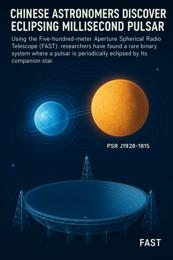Image created by AI
NASA and ESA Mobilize as "City-Killer" Asteroid 2024 YR4 Nears Earth
The astronomical community is on high alert as NASA mobilizes its James Webb Space Telescope to better understand an asteroid coined as a potential "city-killer." Known officially as 2024 YR4, this asteroid presents a small but increasingly likely risk of impacting Earth on December 22, 2032. Detected for the first time in December by the European Space Agency (ESA), initial odds of collision have climbed, prompting an international scientific response.
Since its discovery, the estimate of the asteroid’s probability of striking Earth has increased from about 1% to 2%. While these numbers still suggest a low likelihood of impact, the potential consequences have urged NASA and ESA to prioritize the asteroid's study. This heightened attention has resulted in a rare Level 3 designation on the Torino Impact Hazard Scale indicating a need for considerable monitoring.
Astronomers currently approximate the asteroid's width to be between 40 and 90 meters (130 to 295 feet). In comparison, a standard American football field extends about 300 feet. The ESA has emphasized the importance of refining these measurements, stating, “The hazard represented by a 40 m asteroid is very different from that of a 90 m asteroid." Such distinctions are crucial for assessing possible impact scenarios and preparing mitigation strategies.
Despite the probable benign passage of 2024 YR4 past Earth, its potential landing sites, should an impact occur, span globally. Sites include the eastern Pacific Ocean, northern South America, the Atlantic Ocean, Africa, the Arabian Sea, and South Asia. CBS News space consultant Bill Harwood underscored the seriousness of the scenario, noting that although the asteroid wouldn’t catalyze a mass extinction or global climate effects, its localized damage could still be devastating.
To improve our understanding, the Webb Telescope will be employed to analyze the asteroid’s actual size by examining the infrared emissions it reflects. This method promises greater accuracy over traditional observations reliant on solar reflectance. The telescope’s study phases are scheduled for March and May, during which 2024 YR4 will appear brightest. Following these observations, the asteroid will leave astronomers' view until 2028, giving scientists time to analyze data and predict its exact path.
This proactive approach reflects the global importance of space science and how, even with slim chances, potential threats from space are taken seriously by the international community. By utilizing advanced technological tools like the James Webb Space Telescope, researchers aim to secure enough data to prevent or prepare for the worst-case scenario, showcasing a commendable blend of caution and readiness in the face of cosmic uncertainties.










